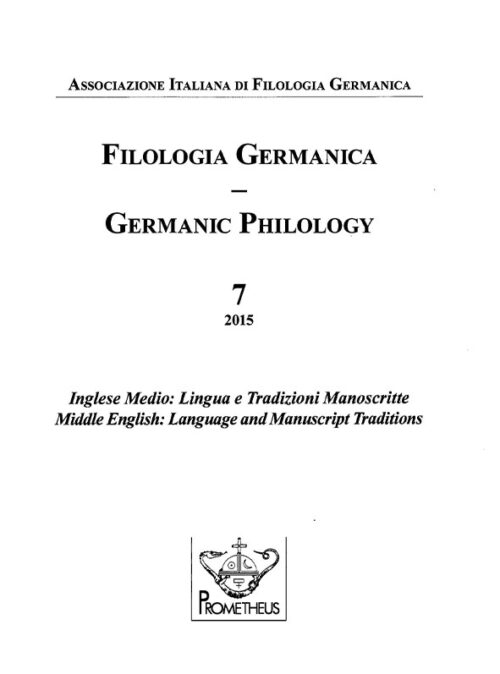Chains of permission: ‘eo’ in Layamon A, Hand B
DOI:
https://doi.org/10.14672/fg.v7i.2588Abstract
There is a tendency among modern historians, even specialists in Middle English, to misconstrue the theoretical foundations of many early orthographical systems, and to see ‘chaos’ or ‘disorder’ where what is in fact being presented is a kind of writing that is not based on any ‘emic’ system, but on one that is rather handled better with a non-biunique and complexly variable kind of system. I choose one here that can be based on the Latin notion of littera, which any scribe would have known from his training in Latin. In this case I distinguish between ‘economical’ and ‘prodigal’ Middle English orthographies, i.e. those which tend toward univocal representation (one or more likely a few graphs per phonological unit) and those which allow often extravagantly multi-vocal representations. The ability to do this is based on a totally non-modern but tightly logical theory of representation, which has been called in a series of works by Margaret Laing and myself since the 1990s ‘litteral substitution’. I show in this paper what economical and prodigal systems are like, and then, using one example, show why in a 13th-century South-West Midland text, where the expectation is that Old English ‘a’ will be represented either as ‘o’ or ‘a’, it can also, in the same word, be represented as ‘eo’. There is a tight logic behind this, which then allows more complex but rule governed variation, e.g. where words with Old English ‘o’ can also be spelled with ‘a’, and words with Old English ‘u’ can also be spelled with ‘eo’. This is not chaos or disorder, but a tightly rule-governed if alien because non-modern orthographic logic.
Pubblicato
Fascicolo
Sezione
Licenza

Questo lavoro è fornito con la licenza Creative Commons Attribuzione - Condividi allo stesso modo 4.0.
CC-BY-SA



